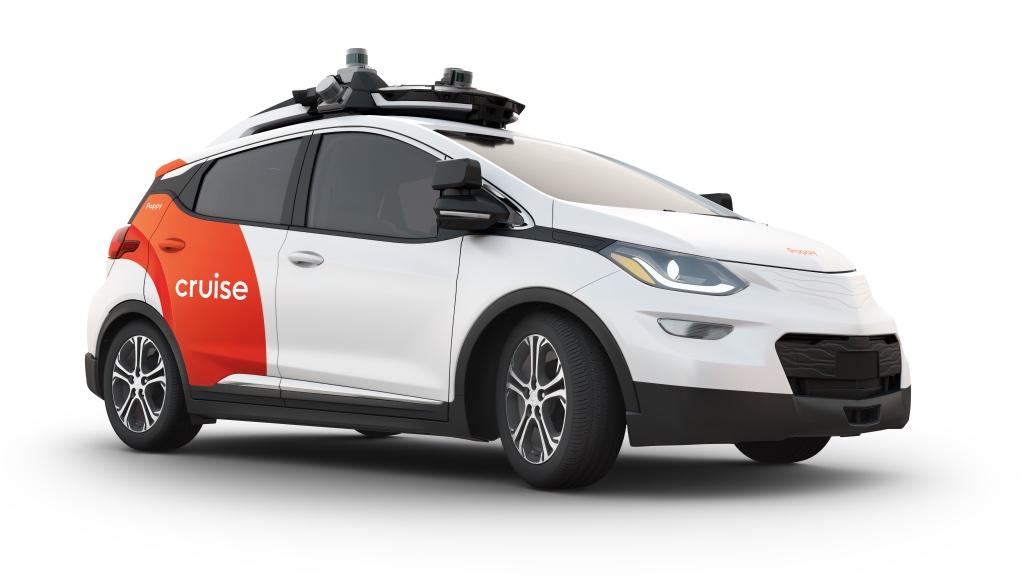General Motors (#GM) has decided to discontinue its Cruise robotaxi program, which was aimed at developing and deploying self-driving, autonomous taxis. Here’s a breakdown of the key elements:
Scrapping the Cruise Robotaxi Program:
GM has halted or shut down the Cruise program, which was one of their major initiatives for creating a fleet of autonomous vehicles that would operate as taxis. These self-driving cars were supposed to pick up and drop off passengers without the need for human drivers.
Citing Time and Costs to Scale:
GM found that the amount of time and money required to make the robotaxi program successful and scalable was much greater than expected. "Scaling the business" refers to the process of expanding and making the program large enough to be viable and profitable, which requires significant investment in technology, infrastructure, and regulatory approvals.
Rising Competition from Other Autonomous Driving Competitors:
GM also mentioned that the growing number of competitors in the autonomous vehicle space made it harder to succeed. Other companies, such as Waymo (from Alphabet/Google), Tesla, Aurora, and others, are also developing autonomous driving technologies, which means the market is becoming more crowded and competitive. This increased competition might have led GM to reassess its position in the robotaxi industry.
Key Implications:
Financial and Strategic Realignment: GM may be choosing to reallocate resources to other projects or areas of business where they believe they can have a stronger impact or better return on investment.
Challenges in Autonomous Vehicles: The decision reflects the broader challenges in the autonomous vehicle industry, including the difficulty in developing fully self-driving cars, the high cost of testing and regulatory approval, and the uncertainty around consumer adoption and profitability.
Impact on the Industry: While this is a setback for GM, it doesn't mean that autonomous vehicles are going away. Other companies are still actively pursuing autonomous driving, and there are still opportunities for the technology in other areas (like self-driving trucks or delivery vehicles).
Scrapping the Cruise Robotaxi Program:
GM has halted or shut down the Cruise program, which was one of their major initiatives for creating a fleet of autonomous vehicles that would operate as taxis. These self-driving cars were supposed to pick up and drop off passengers without the need for human drivers.
Citing Time and Costs to Scale:
GM found that the amount of time and money required to make the robotaxi program successful and scalable was much greater than expected. "Scaling the business" refers to the process of expanding and making the program large enough to be viable and profitable, which requires significant investment in technology, infrastructure, and regulatory approvals.
Rising Competition from Other Autonomous Driving Competitors:
GM also mentioned that the growing number of competitors in the autonomous vehicle space made it harder to succeed. Other companies, such as Waymo (from Alphabet/Google), Tesla, Aurora, and others, are also developing autonomous driving technologies, which means the market is becoming more crowded and competitive. This increased competition might have led GM to reassess its position in the robotaxi industry.
Key Implications:
Financial and Strategic Realignment: GM may be choosing to reallocate resources to other projects or areas of business where they believe they can have a stronger impact or better return on investment.
Challenges in Autonomous Vehicles: The decision reflects the broader challenges in the autonomous vehicle industry, including the difficulty in developing fully self-driving cars, the high cost of testing and regulatory approval, and the uncertainty around consumer adoption and profitability.
Impact on the Industry: While this is a setback for GM, it doesn't mean that autonomous vehicles are going away. Other companies are still actively pursuing autonomous driving, and there are still opportunities for the technology in other areas (like self-driving trucks or delivery vehicles).
General Motors (#GM) has decided to discontinue its Cruise robotaxi program, which was aimed at developing and deploying self-driving, autonomous taxis. Here’s a breakdown of the key elements:
Scrapping the Cruise Robotaxi Program:
GM has halted or shut down the Cruise program, which was one of their major initiatives for creating a fleet of autonomous vehicles that would operate as taxis. These self-driving cars were supposed to pick up and drop off passengers without the need for human drivers.
Citing Time and Costs to Scale:
GM found that the amount of time and money required to make the robotaxi program successful and scalable was much greater than expected. "Scaling the business" refers to the process of expanding and making the program large enough to be viable and profitable, which requires significant investment in technology, infrastructure, and regulatory approvals.
Rising Competition from Other Autonomous Driving Competitors:
GM also mentioned that the growing number of competitors in the autonomous vehicle space made it harder to succeed. Other companies, such as Waymo (from Alphabet/Google), Tesla, Aurora, and others, are also developing autonomous driving technologies, which means the market is becoming more crowded and competitive. This increased competition might have led GM to reassess its position in the robotaxi industry.
Key Implications:
Financial and Strategic Realignment: GM may be choosing to reallocate resources to other projects or areas of business where they believe they can have a stronger impact or better return on investment.
Challenges in Autonomous Vehicles: The decision reflects the broader challenges in the autonomous vehicle industry, including the difficulty in developing fully self-driving cars, the high cost of testing and regulatory approval, and the uncertainty around consumer adoption and profitability.
Impact on the Industry: While this is a setback for GM, it doesn't mean that autonomous vehicles are going away. Other companies are still actively pursuing autonomous driving, and there are still opportunities for the technology in other areas (like self-driving trucks or delivery vehicles).
0 Comments
0 Shares
2K Views
0 Reviews



